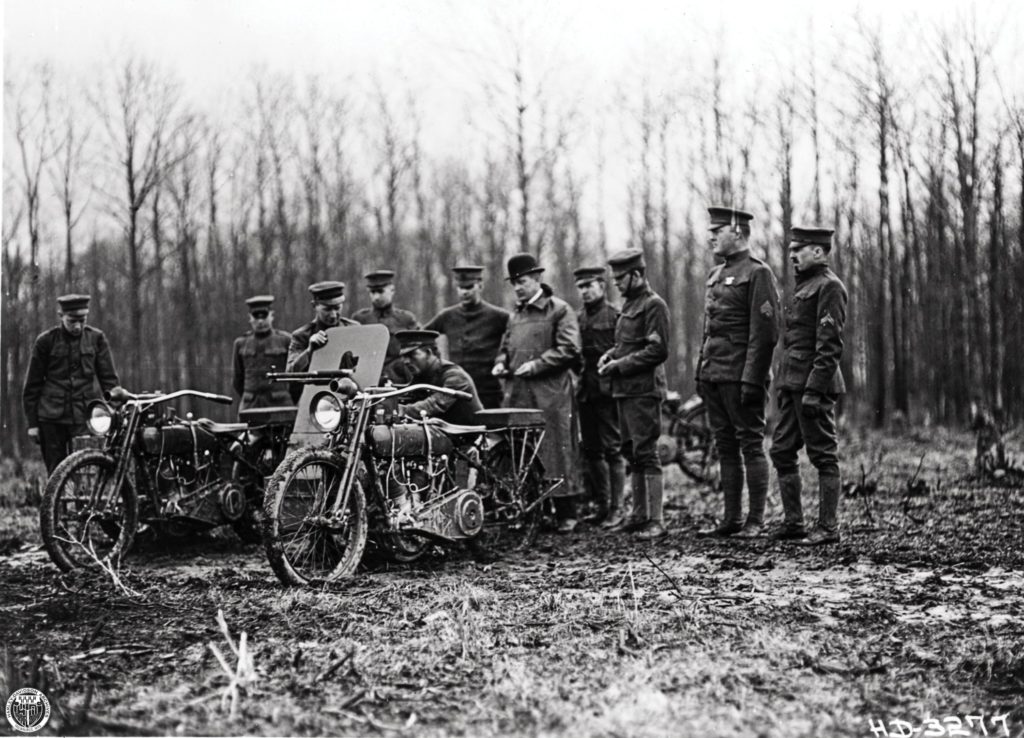
A brief history of Harley-Davidson
and the U.S. Military
Words by Bill Jackson, Senior Archivist, Harley-Davidson Motor Co. Photos courtesy of Harley-Davidson
In 1916, the United States was embroiled in a conflict with Mexican revolutionary Pancho Villa. A series of skirmishes left U.S. Army troops, under the leadership of General “Black Jack” Pershing, chasing Villa and his men along the U.S.-Mexican border. Among their many means of transportation were Harley-Davidson motorcycles with machine guns mounted in the sidecars. The War Department soon ordered a dozen motorcycles directly from Harley-Davidson, and a decades-long partnership began.
With the strategic value of motorcycles proven to the military, the War Department relied heavily upon Harley-Davidson following the entry of the United States into World War I. In fact, the first American to enter Germany one day following the signing of the armistice was aboard a Harley-Davidson motorcycle. By the end of World War I about one-half of all Harley-Davidson motorcycles produced from early 1917 to the end of the war had gone to the U.S. military. Wartime production also gave rise to the birth of the Quartermasters School at Juneau Avenue in Milwaukee, a school for military motorpool mechanics, which evolved over the years into Harley-Davidson University. At war’s end, some 20,000 Harley-Davidson motorcycles had been used by the military.

Even more astounding numbers came during World War II, when Harley-Davidson produced more than 90,000 WLA motorcycles. About one-third of those bikes were sold to the Russian army, with the rest going almost entirely to the U.S. military. The Company’s wartime production was exemplary enough to earn it the Army-Navy “E” Award for excellence in wartime production. Other motorcycles produced in much lower quantities were the WLC (Canadian military), the XA, a shaftdrive motorcycle for desert warfare, the UA model, as well as military G model Servi-Cars.


With the peace that followed World War II, Harley-Davidson produced the rarer XLA (military Sportster) and more WLA models, and in more recent years the MT-350 and MT-500 military motorcycles produced in tandem with Rotax. During the post-World War II years, the Capitol Drive and York factories produced bomb casings and casing lugs on through the Persian Gulf war. Production of Harley-Davidson military motorcycles ended with the discontinuation of the MT motorcycles in 1998.



















Thank you for the history of Rare motorcycles
Thank you